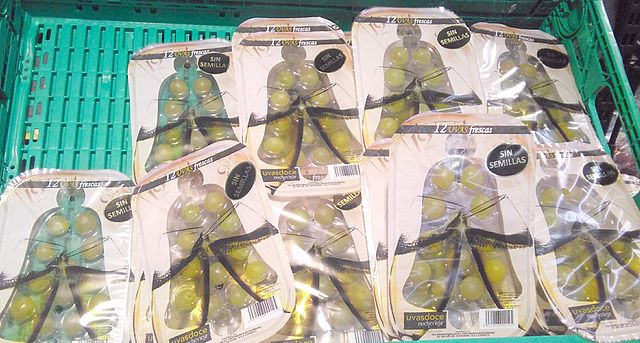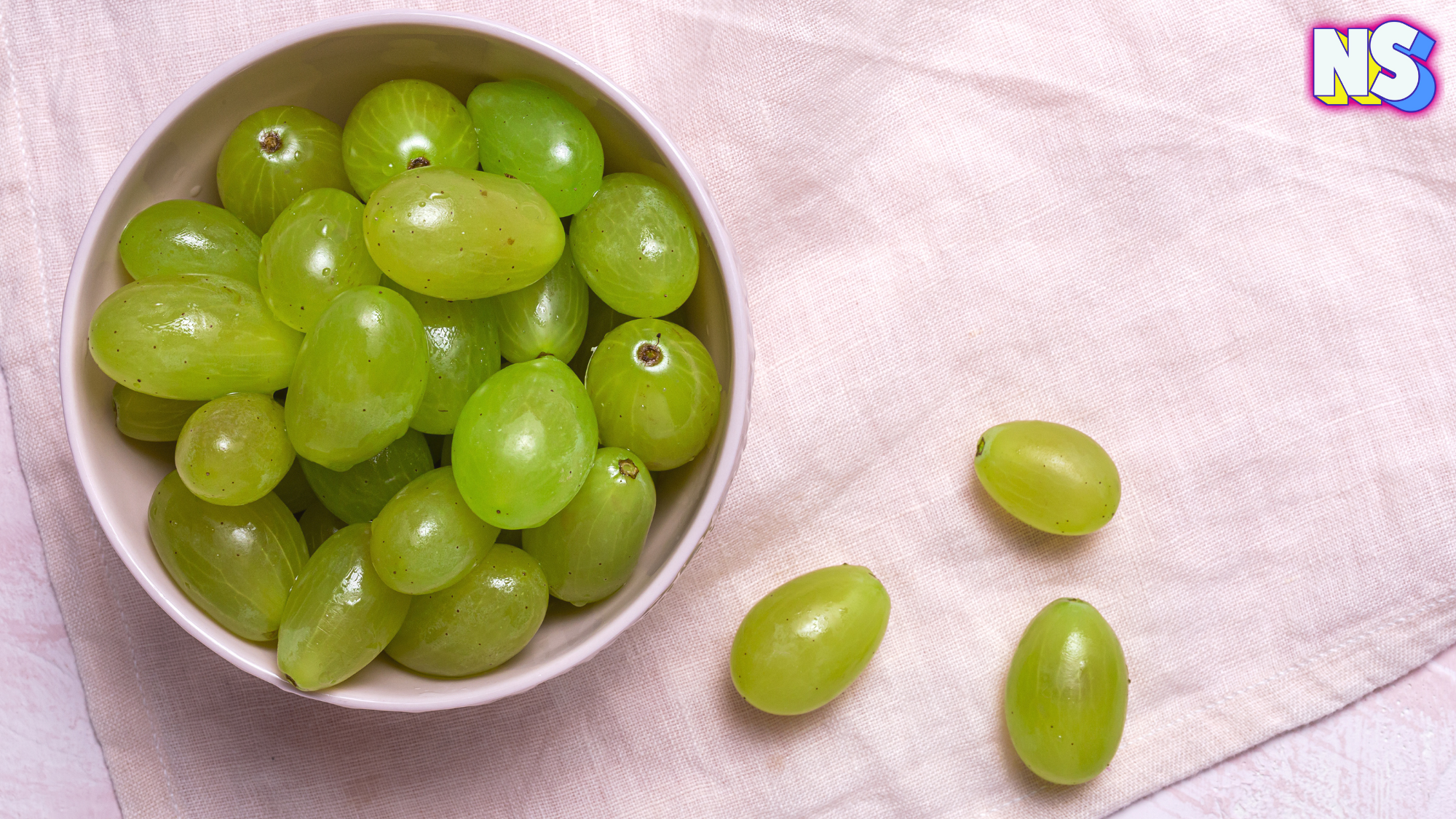As the clock strikes midnight on December 31, New Year's Eve, a centuries-old tradition takes center stage in Spain. It’s the eating of the twelve grapes.
The custom dictates that, as each chime of the clock strikes 12, on Nochevieja, you must swiftly consume a grape, aiming for twelve in total. It's not just a tasty task, but a symbol of securing prosperity and good fortune for the upcoming year.
Pictured here: 12 grapes for sale in Spain's Vitoria supermarket.
“On this day, family or friends usually get together for a delicious dinner and then have the twelve grapes. In many towns and villages people go to a central square or an iconic place where there is a large clock, to eat the grapes together and share the last minutes of the old year,” Spain’s official tourism site explains.
Originating from Spain, the tradition of "twelve grapes" is known as “Las Doce Uvas De La Suerte,” or "The Twelve Lucky Grapes.” The practice involves consuming one green grape for each of the forthcoming twelve months as a means to secure good luck for the year ahead.
But where did this tradition come from?
To understand the history, we must first examine the grapes themselves.
Grapes of Good Fortune
According to NPR, the grapes eaten on Spanish New Year’s Eve are “lucky grapes.”
They come from Vinalopó valley, situated in the heart of Alicante along Spain's Mediterranean coast, and home to approximately 80 percent of the revered "lucky grapes."
These exquisite gems, known as Aledo, boast a fleshy, tantalizing sweetness and a striking pale, almost whitish-green hue, embodying a traditional Spanish variety cherished for its distinct qualities. Interestingly, these grapes, maturing late in the season, aren't plucked until the months of November and December.
But these aren't your run-of-the-mill grapes; they hold a storied history.
“Protected by Denominación de Origen (designation of origin, or D.O.) status, budding clusters are wrapped in paper bags in June and July and kept covered as they ripen,” NPR writes. “This was first done in the late 19th century to protect them from a plague of cochylis vine moths. Growers found it also conserved the flavor, aroma and color of the grapes, and slowed their maturation.”
Plus, according to NPR, the practice of bagging grapes results in the development of a notably finer peel. Shielded from the natural elements like rain, sun, and wind, these grapes can form a delicate outer skin, enhancing their quality and texture.
The grapes are therefore easier to swallow as the clock strikes midnight.
But when did this tasty tradition start?
A Dive into a Tasty Tradition
The origin – like many origin stories surrounding traditions – of the New Year’s tradition is not clear.
One story about the Twelve Lucky Grapes is that a large crop of grapes in 1909 in Alicante, Spain led to the growers seeking out a creative way to eliminate their surplus.
Some say the tradition was born decades earlier though.
“ … according to food writer Jeff Koehler, newspaper articles about the tradition from the 1880s suggest it developed from Madrid’s bourgeoisie copying the French custom of drinking champagne and eating grapes on New Year’s Eve,” Atlas Obscura explains.
The tradition spread to Central American, South America, and the Caribbean and soon became superstition.
“If you fail to conscientiously finish your grapes by the time the clock stops chiming, you’ll face misfortune in the new year,” Atlas Obscura says.
Whether viewed as a magical omen or simply a delightful tradition, partaking in this grape-eating ritual promises a moment of festive joy and a hopeful start to the New Year.
Embrace the experience – after all, who can’t use a little good luck?





